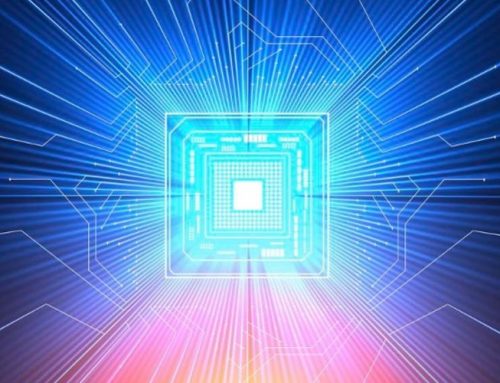Data is choking the classic internet, expanding exponentially and clogging networks, making the promise of the 5G network alluring.
What is a 5G network? Funnily enough, it’s the fifth generation of broadband cellular or wireless networks, proven to be inherently more efficient and faster at handling ever-growing connections and users. While super-fast 5G connections currently exist mainly in a few major metropolitan areas, 5G is expected to expand nationwide within the next few years.
With its ability to connect tens of billions of new devices and evolve with future communications technologies, 5G is no doubt the wave of the future. But the same speed and bandwidth promises apply to the bad guys, too, introducing new opportunities for high-speed hackers to emerge.
And chief information security officers (CISOs) sense there’s trouble brewing: Nearly 73% rated their security concern as medium-high to high in an AT&T study.
There’s one technology field that will likely change the security landscape: quantum computing.
While a true, fiber-backed quantum internet that securely connects governments and corporations is admittedly years away, the U.S. Department of Energy and its partners are committed to its development, a move that could propel the United States to the front of the global quantum race.
Until then, CISOs can take advantage of quantum technologies and the existing fiber network in the United States today to gain immediate protection for 5G networks and the legacy enterprise applications they are tapping into.
Let’s talk about fiber first.
The simple fact is that beneath every wireless network there’s a hard-wired, fiber-optic network backbone. In the United States today, we have a growing fiber network across the country that spans more than 4 million route miles.
Quantum cryptography also requires fiber cables to send photons of light from one point to another, and once sent, quantum-secured data is virtually unhackable. By installing quantum technology like QKD at key “hub” locations throughout the fiber network that underpins 5G, data trafficked on the 5G network could be protected.
QKD, or quantum key distribution, is a method of communication that allows two parties to create a shared random “key” that is known only to them. This key can be used to encrypt and decrypt messages.
Interestingly, China is unintentionally helping to spur quantum security adoption. Wireless network technology from Huawei is being ripped and replaced because of fears the Chinese government may potentially use it to gather data and competitive intelligence. This action is giving U.S. and other network managers the opportunity to combine traditional, mathematical security algorithms and the physical protection afforded by QKD encryption as an important near-term solution to data security.
Quantum security should be considered as an element of any forward-looking CISO’s game plan. Unfortunately, much of today’s existing security processes have one major point of failure: people.
Did you know that the Colonial Pipeline hackers got in through a single password that allowed employees to remotely access the company’s computer network through a virtual private network (VPN) account? An employee account that was no longer in use and that did not use multifactor authentication was used to take down the largest fuel pipeline in the United States, according to Bloomberg (paywall).
The fact is, good security hygiene is a great place to start to build a strong, security-first foundation that will enable you to take advantage of 5G and be primed for the quantum internet. Best practices like enabling two-factor authentication and employee education on cybersecurity efforts are essential for businesses today.
We were lucky the Colonial Pipeline hackers were satisfied to get a monetary ransom, which was in fact eventually recovered by U.S. law enforcement. We face real trouble when the next cybercriminal just wants to create chaos.




